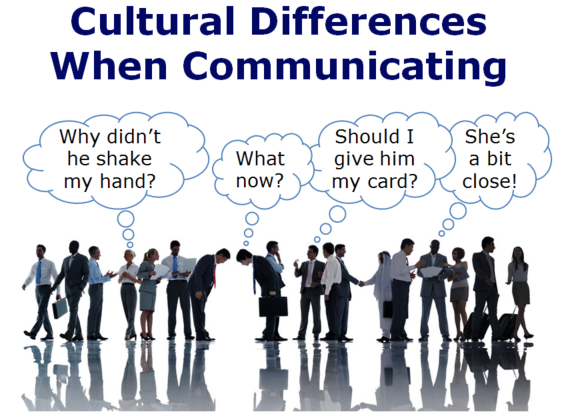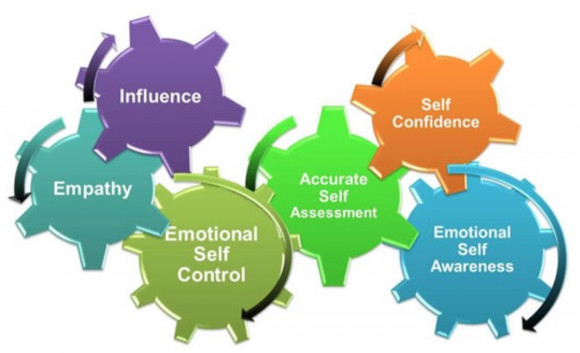Synergy is the synthesis of what individuals in the group offer to the organization. It is about the whole being greater than the sum of its parts than individual parts (PSU, 2017). Synergy is a cooperative or combined action, and occurs when diverse or disparate individuals or groups collaborate for a common cause. Moran, Abramson, and Moran (2014) indicated the objective is to increase synergistic effectiveness by sharing perceptions and experiences, insights, and knowledge (p. 266).
Being part of a synergistic culture is rewarding and allows all that take part learn from each other’s perspectives. For instance, I work for a large global company and on the many teams and meetings I attend, there are no less than five languages and nationalities that are part of the process. In today’s organizations are set apart by how they adapt to persons that make up their organizations and how these employees communicate with others they do business with. In a domain where change is the standard, shared goals and accord should exist as a cultural norm. Oxford University provides a cultural communication quiz to assist professionals to determine how culturally aware and sensitive they are.
Alternately, I have been in a situation in which the work environment was made unbearable by a new manager that was ill-equipped to deal with people as well as to effectively perform the tasks of the job. It made all on the team wonder why this person was selected to serve on the team in the first place. It did not take long for mass conflict to ensue. In the end, was that of five people that were on the team only one remained. This person needed to remain because of personal issues, as they needed their medical benefits; yet, expressed they were disengaged and unhappy about the change on the team. The other four people left the organization and although may have enjoyed the work they did and the organization prior to the new manager, left the organization with poor evaluations of the company. In short, new people that enter a team must take the opportunity to learn cultural norms and be respectful to those norms so they will become effective to teams and thus the organizations they serve. In this case, endeavors to make or change an organization’s culture were useless.
Cultural communication methodologies may clarify how social impacts, both inner and outside to an organization, shape traditional cultures (Shockley-Zalabak, 2015). The idea that organizations are cultures in and of themselves is an essential one, because organizations develop, values, customs, and behaviors. An essential traditional culture approach, in this way, looks to comprehend a specific association as being constituted by the typical practices and attributions of significance of its individuals (Shockley-Zalabak, 2015). Deal’s and Kennedy’s initial investigations of traditional culture recommends that the culture of an organization is made by top administration for workers and understood in how the organization identifies with its condition (Shockley-Zalabak, 2015). In this point of view, traditional culture imprints the culture upon its employees, whereas, many employees see that changes to culture are difficult to address or change (Gunkel, Schlaegel, & Taras, 2016).
The classic example of this is the “saving face” tradition in collectivistic cultures that occurs via indirect communication (PSU, 2017). This custom is followed so that no one ever loses their reputation in public. But this behavior may not address the problem in an individualistic society, where direct communication about a problem is desired. Signs of managerial strength are seen differently in different cultures (PSU, 2017). For example, Americans tend to favor direct communication over that of Asian cultures who may use others in the organization to communicate messages to subordinates. Cross-cultural situations are almost guaranteed to generate constant conflict because of differing perspectives, not to mention possible language barriers and other communication issues that may lead to misunderstandings (Gunkel, Schlaegel, & Taras, 2016). Ultimately, synergy is about taking the talents of everyone in the organization and combining them into something greater (Moran et al., 2014). Cultural synergy is about using the diverse perspectives of various cultures and team members to create something that is greater than each individual culture.
In conclusion, cultural communication frameworks must consider hierarchical communication as dynamic, inside and outside of the organization. Organizations must consider, high-synergy cultures which tend to be highly cooperative, community-oriented, and have the good of all in mind (Moran et al., 2014). Typically, these societies are collectivistic in nature. Low-synergy cultures, on the other hand, tend to be more individualistic (Moran et al., 2014). They allow members of society to pursue individual goals somewhat at the expense of the group by allowing aggressive and competitive behaviors (Moran et al., 2014). This type of culture allows for more creativity and freedom of expression as there is not a dictator or ruling faction stifle people that exist within the organization or society.
References
Gunkel, M., Schlaegel, C., & Taras, V. (2016). Cultural values, emotional intelligence, and conflict handling styles: A global study. Journal of World Business, 51(4), 568-585.
Moran, R. T., Abramson, N. R., & Moran, S. V. (2014). Managing Cultural Differences (9th ed.). Oxford: Routledge.
Oxford University Press. (2017). Cross culture communication quiz. Retrieved from: http://global.oup.com/us/companion.websites/9780199747382/student/chapter2/tests/quiz/
Penn State University. (2017). Leadership in a Global Context, “Lesson 06: Cultural Sysnergy,” Retrieved from: https://psu.instructure.com/courses/1826457/modules/items/21654123
Shockley-Zalabak, P. (2015). Fundamentals of Organizational Communication, 9th Edition. Pearson.


